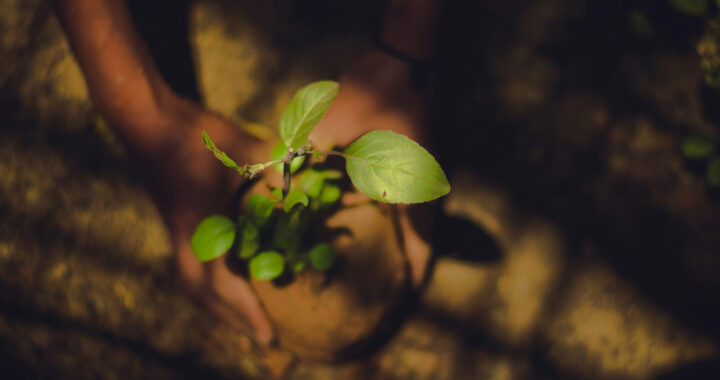Large-scale greening, which includes tree-planting and is often celebrated as a solution to climate change and an environmental restoration initiative, carries unintended drawbacks. Findings from a Chinese-led study published in Communications Earth & Environment on 28 July 2025 revealed that almost half of the vegetated land in the world experienced soil drying as a direct result of greening between 1982 and 2020.
The Double-Edged Sword of Greening: Chinese-Led Study Finds Tree Planting May Reduce Soil Moisture Further and Worsen Drought in Dry Regions
Background
About 65 percent of the land vegetation on Earth has become greener since the 1980s. This is due to tree planting and other afforestation programs, expansion of agricultural activities, and specific climate-related factors. Greening is not limited to forests. It also includes croplands and grasslands. However, while greening is often seen as beneficial for carbon storage and climate mitigation, earlier studies have noticed contradictory signals.
In some areas in the world, soils appeared to be drying despite increased vegetation. This raised critical questions: Does more vegetation always mean more water retention, or can it sometimes worsen drought risk? A research team headed by Yongchang Liu, Zhi Li, and Yaning Chen wanted to resolve this uncertainty by distinguishing between correlations and actual cause-and-effect relationships—something earlier studies struggled to prove.
The team gathered satellite images taken from 1982 to 2020 that measured how green the land surface is. A green surface is an indicator of vegetation growth. They also used two global datasets that estimate how much water is stored in soils. The researchers then checked whether areas had become greener or browner over time. Statistical methods were used to see if greening was likely causing changes in soil moisture.
It was also important for them to break down how water moves through the land. This involved factoring in transpiration, canopy interception, and soil evaporation. Measuring these enabled them to see which processes were responsible when soils became drier or wetter. Climate simulation models up to the year 2100 were then used to see if the patterns they observed in the past are likely to continue under future climate and land-use conditions.
Findings
• Greening Often Causes Soil Drying: Nearly 50 percent of vegetated land area showed a greening-to-drying relationship. ERA5 soil moisture data showed 49.96 percent of vegetated pixels dried as greening advanced. GLEAM soil moisture data showed a lower but still significant figure of 38.19 percent.
• Strong Regional Differences: Drying was observed in the southern and western parts of the United States, Mexico, South America, Central Africa, northern Europe, Central Asia, northeastern Asia, and eastern Australia. Wetter soils were seen in central North America, the Indian subcontinent, northeast Asia, and wetter tropical regions.
• Vegetation Water as the Main Driver: Transpiration accounted for 44 to 46 percent of global soil moisture sensitivity. Other processes, like canopy interception and bare-soil evaporation, played smaller roles. This shows plant water use is the leading mechanism behind greening-induced soil drying.
• Land Types Differ in Vulnerability: Grasslands and croplands are most prone to soil moisture loss after greening. Forest ecosystems showed more moderate effects. However, significant regional variations were recorded in these ecosystems. Ecosystems with limited water are especially sensitive to vegetation expansion.
• Seasonal Dependence of Drying Events: Soil drying driven by greening was most evident in summer. This is considered peak growing season. This intensifies drought risks during warm months because water demand is at its highest. It raises risks of agricultural stress and combined heat-drought events.
• Persistence of Effects in the Future: Simulation models forecast that greening-induced soil drying will continue throughout the 21st century. Vegetation water use will increase further under high-emission scenarios. More than 42 percent of global vegetation areas are also projected to encounter sustained drying trends.
Explanations
Greening leads to soil drying in some regions because of two main mechanisms. Note that plants grow more leaves and become more active when vegetation increases. This increases transpiration in which plants pull water from the soil and release it into the air. At the same time, leaves intercept rainwater, preventing it from reaching the ground. The amount of rainfall in some regions is not enough to balance the extra water loss from transpiration.
However, in wetter regions, including tropical regions, the extra moisture released by plants can sometimes help form more clouds and rainfall, which balances the loss. This feedback is weak in dry and semi-arid zones. Observed areas where soil drying is persistent due to greening include the southern and western parts of the United States, Mexico, most of South America, and Central Africa. The water supply in these areas is either limited or seasonal.
Greening initiatives like tree planting are not universally beneficial. The findings above have important implications for environmental policies, forest restoration undertakings, agricultural expansion, and climate change mitigation. The researchers recommend assessing local soil moisture carrying capacity before implementing greening efforts. This is true in water-limited regions of Central Asia, Africa, and southern Australia.
FURTHER READING AND REFERENCE
- Liu, Y., Li, Z., Chen, Y., Jin, L., Li, F., Wang, X., Long, Y., Liu, C., and Kayumba, P. M. 2025. “Global Greening Drives Significant Soil Moisture Loss.” Communications Earth & Environment. 6(1). DOI: 1038/s43247-025-02470-3
